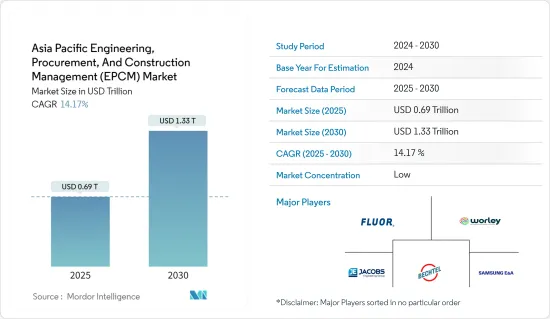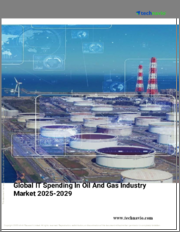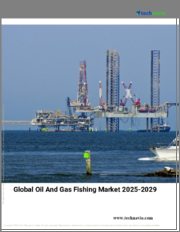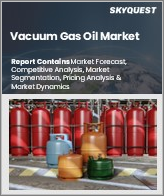
|
시장보고서
상품코드
1636211
아시아태평양의 EPCM(설계, 조달, 건설 및 관리) 시장 전망 : 시장 점유율 분석, 산업 동향과 통계, 성장 예측(2025-2030년)Asia Pacific Engineering, Procurement, And Construction Management (EPCM) - Market Share Analysis, Industry Trends & Statistics, Growth Forecasts (2025 - 2030) |
||||||
아시아태평양의 EPCM(설계, 조달, 건설 및 관리) 시장 규모는 2025년 6,900억 달러로 추정되며, 예측기간 중(2025-2030년) 연평균 성장율(CAGR)은 14.17%로, 2030년에는 1조3,300억 달러에 달할 것으로 예측됩니다.

아시아태평양의 EPCM(설계, 조달, 건설 및 관리) 시장은 급속한 산업화, 도시화, 인프라 확장에 힘입어 크게 성장했습니다. 이러한 성장을 주도하는 주요 산업으로는 에너지, 광업, 석유 및 가스, 건설이 있습니다.
아시아 태평양 전역에서 각국 정부는 광범위한 인프라 구축에 막대한 투자를 하고 있습니다. 여기에는 도로, 철도, 공항을 포함한 교통, 도시 개발, 스마트 시티 추진 등이 포함됩니다. 에너지 수요가 증가함에 따라 태양광 및 풍력 발전과 같은 재생 에너지에 특히 중점을 두고 발전 분야에 대한 투자가 이루어지고 있습니다. 특히 중국과 인도와 같은 국가의 빠른 산업 확장은 제조 및 산업 시설에서 EPCM 서비스에 대한 수요를 강화하고 있습니다. 아시아 태평양 지역의 풍부한 광물 자원을 고려할 때, 이 지역은 광산 프로젝트가 급증하고 있으며, 이에 따라 종합적인 EPCM 서비스가 필요합니다.
중국은 인프라, 에너지 및 산업 분야에서 대규모 투자의 선두에 서서 이 지역 시장에서 두드러지고 있습니다. 중국의 야심찬 일대일로 이니셔티브(BRI, Belt and Road Initiative)는 EPCM 시장에서의 입지를 더욱 공고히 하고 있습니다. 한편, 인도는 도시 개발, 재생 에너지, 산업 벤처에 대한 뚜렷한 투자로 상당한 진전을 이루고 있습니다. 메이크 인 인디아 및 스마트 시티 미션과 같은 주요 정부 프로그램이 이러한 성장을 견인하는 데 중추적인 역할을 하고 있습니다. 탄탄한 광산업으로 유명한 호주는 수많은 프로젝트의 수요를 충족하기 위해 점점 더 고급 EPCM 솔루션으로 눈을 돌리고 있습니다. 또한 호주는 재생 에너지와 인프라에 집중하고 있어 시장 확대에 더욱 박차를 가하고 있습니다. 반면, 일본과 한국은 스마트 시티와 지속 가능한 에너지 솔루션에 주목하면서 인프라 프로젝트에 첨단 기술을 통합하는 데 관심을 기울이고 있습니다.
아시아태평양의 EPCM 시장 동향
아시아태평양의 EPC 시장을 강화하는 정부의 지원
아시아태평양(APAC) 국가의 정부는 EPC(설계, 조달 및 건설) 시장의 성장을 강화하기 위해 다양한 노력을 시행하고 있습니다. 이러한 노력은 주로 인프라, 에너지 및 산업 확장을 목표로 합니다.
중국의 일대일로 이니셔티브(BRI)는 아시아, 유럽, 아프리카 전역의 연결성과 협력을 강화하는 것을 목표로 하는 중국 전략의 초석입니다. 이는 교통, 에너지, 무역로에 대한 막대한 투자로 이어집니다.
중국은 2021년부터 2025년까지 티베트의 인프라 프로젝트에 300억 달러라는 거액의 예산을 계상하고 있습니다. 2025년까지 티베트에는 1,300km 이상의 고속도로와 놀라운 12만km의 고속도로가 건설될 예정입니다. 티베트의 14차 5개년 계획에서 주목할 만한 프로젝트에는 사천 티베트 철도의 마사야안-닝케간, 호탄-시가체 간 및 길롱-시가체 간의 초기 공사, 대규모 청두-무한-상하이 간 고속철도 네트워크가 포함됩니다.
인도의 스마트 시티 미션은 100개 도시를 스마트 도심으로 탈바꿈시키는 것을 목표로 하는 중추적인 노력입니다. 이 도시들은 업그레이드된 도시 인프라, 지속 가능한 자원, 스마트 기술의 강력한 통합을 통해 구상되고 있습니다. 국가 인프라 파이프라인(NIP)은 2025년까지 교통, 에너지, 물, 위생 분야에 걸쳐 1조 5천억 달러에 가까운 투자를 계획하는 포괄적인 청사진입니다.
또한, '메이크 인 인디아'는 인도 정부의 주요 전략으로 국내외 기업들이 인도에 제조 기지를 설립하도록 유도하고 있습니다. 이는 특히 전자, 자동차, 제약과 같은 산업에서 산업 인프라를 강화하고 투자를 유치하는 데 초점을 맞추고 있습니다.
결론적으로 아시아태평양 지역 각국 정부는 전략적 조치를 통해 EPC(설계, 조달 및 건설)시장을 적극적으로 강화하고 있습니다. 중국의 일대일로 이니셔티브(BRI)는 글로벌 연결과 협력을 강화하려는 중국의 노력을 보여주는 대표적인 사례입니다. 특히 중국은 티베트의 인프라 프로젝트에 중점을 두고 교통, 에너지, 무역로에 상당한 투자를 하고 있으며, 이는 지역 개발 의지를 강조하는 것입니다. 이와 동시에 인도는 스마트 시티 미션과 광범위한 국가 인프라 파이프라인(NIP)과 같은 노력을 통해 도시 구조를 재편하고 있습니다.
아시아태평양 지역의 국가 중 가장 빠르게 성장하는 EPCM 시장 중 하나인 인도
인도는 EPCM(설계, 조달, 건설 및 관리) 서비스 분야에서 가장 빠르게 성장하는 시장 중 하나입니다. 스마트 시티 미션, 고속도로를 위한 바라트말라 파리요자나, 항만을 위한 사가르말라 프로젝트와 같은 인도 정부의 야심찬 인프라 프로그램이 핵심적인 역할을 하고 있습니다. 이러한 지원은 인프라에 대한 인도의 노력을 강조하며, 이는 EPCM 서비스를 위한 상당한 길을 열어주고 있습니다. 도시화가 증가함에 따라 지하철 시스템부터 공항, 스마트 시티에 이르기까지 도시 인프라를 개선해야 할 필요성이 절실히 요구되고 있습니다. 여기에 제조업 강화를 위한 '메이크 인 인디아' 이니셔티브가 새로운 플랜트와 산업 시설 건설에 박차를 가하면서 EPCM 서비스에 대한 수요가 증가하고 있습니다.
외국인 직접 투자(FDI)에 대한 인도의 환영 입장은 글로벌 기업들을 끌어들여 인프라 개발과 EPCM 전문성에 대한 수요를 더욱 증폭시키고 있습니다. 또한 인도의 공격적인 재생 에너지 목표, 특히 태양열, 풍력, 수력 발전은 EPCM 기업에게 비옥한 토양을 제공합니다.
인도가 증가하는 에너지 수요를 충족하기 위해 발전 및 배전 네트워크를 확장하고 현대화함에 따라 EPCM 시장은 더욱 탄력을 받고 있습니다. 프라드한 만트리 아와스 요자나(PMAY)와 같은 주택 이니셔티브도 주택 건설 및 관련 인프라에 대한 수요를 촉진하고 있습니다. 또한 도로에서 전기화 프로젝트에 이르는 농촌 인프라에 대한 막대한 투자로 EPCM 서비스의 범위가 더욱 확대되고 있습니다.
인도의 인프라 산업은 2025년까지 1조 4,000억 달러에 달하는 투자가 계획되어 있는 등 강력한 성장세를 보이고 있습니다. 인도 정부의 야심찬 국가 인프라 파이프라인(NIP) 프로그램은 에너지, 도로, 철도, 도시 개발 등 다양한 산업에 막대한 자본을 투입하는 것을 골자로 합니다. 이 전례 없는 추진은 관련 산업을 육성하고 일자리를 창출하며 경제를 활성화할 것으로 기대됩니다. 구체적인 중점 분야는 공공 디지털 인프라 확충, 청정 및 재생 에너지 프로젝트, 탄력적인 도시 인프라 구축입니다. 이 야심찬 프로젝트는 인도의 글로벌 경쟁력을 강화하고 방대한 인구의 삶의 질을 개선하기 위한 것입니다.
인도의 EPCM 시장은 국가의 적극적인 인프라 프로젝트, 야심찬 신재생에너지 목표, 유리한 해외 직접 투자 정책에 힘입어 엄청난 성장을 이루고 있습니다.
아시아태평양의 EPCM 산업 개요
아시아태평양의 EPCM시장은 다수의 기업을 보유한 단편적인 시장입니다. 이 시장에는 Fluor Corporation, Worley, Jacobs Engineering Group, Bechtel Corporation, Samsung Engineering 등이 있습니다.
기타 혜택
- 엑셀 형식 시장 예측(ME) 시트
- 3개월간의 애널리스트 지원
목차
제1장 서론
- 조사의 성과
- 조사의 전제
- 조사 범위
제2장 조사 방법
제3장 주요 요약
제4장 시장 역학
- 시장 개요
- 시장 성장 촉진요인
- 신재생에너지원 도입과 지속가능한 인프라 프로젝트 증가
- 급속한 산업화와 도시화
- 시장 성장 억제요인
- 건축자재와 관련된 비용 상승
- 공급망의 혼란
- 시장 기회
- 스마트 인프라 기술 채용
- 밸류체인, 서플라이체인 분석
- Porter's Five Forces 분석
- 신규 진입업자의 위협
- 구매자, 소비자의 협상력
- 공급기업의 협상력
- 대체품의 위협
- 경쟁 기업간 경쟁 관계의 강도
- PESTLE 분석
- 시장에서의 혁신의 통찰
제5장 시장 세분화
- 서비스별
- 설계
- 조달
- 건설
- 기타 서비스
- 섹터별
- 주택, 산업, 인프라(수송), 에너지 및 유틸리티
- 산업
- 인프라(운수)
- 에너지 및 유틸리티
- 국가별
- 중국
- 인도
- 일본
- 호주
- 한국
- 아시아태평양의 기타 국가
제6장 경쟁 구도
- 시장 집중도 개요
- 기업 프로파일
- Fluor Corporation
- Worley
- Jacobs Engineering Group
- Bechtel Corporation
- 삼성엔지니어링
- 현대엔지니어링 & Construction
- Chiyoda Corporation
- JGC Corporation
- China State Construction Engineering Corporation
- Larsen & Toubro(L&T)
- Kent
- Nuberg EPC
제7장 향후의 동향
HBR 25.02.10The Asia Pacific Engineering, Procurement, And Construction Management Market size is estimated at USD 0.69 trillion in 2025, and is expected to reach USD 1.33 trillion by 2030, at a CAGR of 14.17% during the forecast period (2025-2030).

The Asia-Pacific engineering, procurement, and construction management (EPCM) market has grown substantially, propelled by rapid industrialization, urbanization, and infrastructure expansion. Key industries fueling this growth include energy, mining, oil and gas, and construction.
Across APAC, governments are channeling significant investments into a broad spectrum of infrastructure endeavors. These span transportation (comprising roads, railways, and airports), urban development, and the promotion of smart cities. The escalating energy needs are steering investments toward power generation, with a notable emphasis on renewables like solar and wind farms. Notably, the swift industrial expansion, particularly in nations such as China and India, bolsters the demand for EPCM services in manufacturing and industrial setups. Given APAC's abundant mineral resources, the region is witnessing a surge in mining projects, all necessitating comprehensive EPCM services.
China stands out in the regional market, spearheading substantial investments across the infrastructure, energy, and industrial domains. Its ambitious Belt and Road Initiative (BRI) further cements its position in the EPCM market. Meanwhile, India is making significant strides with pronounced investments in urban development, renewable energy, and industrial ventures. Key government programs like Make in India and the Smart Cities Mission are pivotal in driving this growth. Australia, known for its robust mining industry, is increasingly turning to advanced EPCM solutions to meet the demands of its numerous projects. Furthermore, the country's focus on renewable energy and infrastructure is further fueling market expansion. Japan and South Korea, on the other hand, are directing their attention toward integrating cutting-edge technologies into their infrastructure projects, with a keen eye on smart cities and sustainable energy solutions.
Asia Pacific EPCM Marke Trends
Government Initiatives Bolstering the APAC EPC Market
Governments in Asia-Pacific (APAC) countries are rolling out various initiatives to bolster growth in the engineering, procurement, and construction (EPC) market. These initiatives predominantly target infrastructure, energy, and industrial expansions.
China's Belt and Road Initiative (BRI) is a cornerstone of its strategy, aiming to enhance connectivity and collaboration across Asia, Europe, and Africa. This initiative translates into significant transportation, energy, and trade route investments.
China has earmarked a hefty USD 30 billion for infrastructure projects in Tibet from 2021 to 2025. By 2025, Tibet is set to boast over 1,300 km of expressways and a staggering 120,000 km of highways. Notable projects in Tibet's 14th Five-Year Plan encompass the Ya'an to Nyingchi leg of the Sichuan Tibet Railway, initial groundwork on the Hotan-Shigatse and Gyirong-Shigatse railway lines, and the expansive Chengdu-Wuhan-Shanghai high-speed railway network.
In India, the Smart Cities Mission is a pivotal endeavor, aiming to transform 100 cities into smart urban centers. These cities are envisioned with upgraded urban infrastructure, sustainable resources, and a strong integration of smart technologies. The National Infrastructure Pipeline (NIP) is a comprehensive blueprint outlining investments nearing USD 1.5 trillion by 2025, spanning transportation, energy, water, and sanitation.
Additionally, 'Make in India' is a flagship government initiative, beckoning both domestic and international firms to set up manufacturing bases in the country. The initiative is laser-focused on bolstering industrial infrastructure and attracting investments, particularly in industries like electronics, automotive, and pharmaceuticals.
Conclusively, governments across Asia-Pacific countries are actively bolstering the engineering, procurement, and construction (EPC) market through strategic measures. China's Belt and Road Initiative (BRI) stands out as a prime example, showcasing its dedication to enhancing global connectivity and cooperation. Notably, China is channeling significant investments into transportation, energy, and trade routes, with a particular focus on infrastructure projects in Tibet, underscoring its regional development commitment. Simultaneously, India is reshaping its urban fabric through initiatives like the Smart Cities Mission and the expansive National Infrastructure Pipeline (NIP).
India Leads Among APAC Countries as one of the Fastest-growing EPCM Markets
India leads Asia-Pacific as one of the fastest-growing markets for engineering, procurement, and construction management (EPCM) services. The Indian government's ambitious infrastructure programs, such as the Smart Cities Mission, Bharatmala Pariyojana for highways, and the Sagarmala Project for ports, are pivotal. These initiatives underscore the nation's commitment to infrastructure, which is opening up substantial avenues for EPCM services. With urbanization on the rise, there is a pressing need for enhanced urban infrastructure, from metro rail systems to airports and smart city endeavors. Complementing this, the "Make in India" initiative, designed to bolster the manufacturing industry, is fueling the construction of new plants and industrial facilities, escalating the demand for EPCM services.
India's welcoming stance on foreign direct investment (FDI) lures global players, further amplifying the call for infrastructure development and EPCM expertise. Additionally, India's aggressive renewable energy targets, especially solar, wind, and hydroelectric power, create fertile ground for EPCM firms.
As India expands and modernizes its power generation and distribution networks to meet escalating energy needs, the EPCM market receives an added impetus. Housing initiatives like the Pradhan Mantri Awas Yojana (PMAY) are also propelling the demand for residential construction and its associated infrastructure. Furthermore, substantial investments in rural infrastructure, spanning from roads to electrification projects, are further broadening the scope of EPCM services.
India's infrastructure industry is poised for strong growth, with planned investments amounting to USD 1.4 trillion by 2025. The government's ambitious National Infrastructure Pipeline (NIP) program outlines the injection of massive capital into various industries, including energy, roads, railways, and urban development. This unprecedented push is expected to spawn associated industries, create jobs, and stimulate the economy. Specific focus areas are expanding public digital infrastructure, clean and renewable energy projects, and establishing resilient urban infrastructure. This ambitious undertaking seeks to enhance India's global competitiveness and improve the quality of life across its vast populace.
The Indian EPCM market is witnessing substantial growth, propelled by the nation's proactive infrastructure projects, ambitious renewable energy goals, and favorable foreign direct investment policies.
Asia Pacific EPCM Industry Overview
The Asia-Pacific engineering, procurement, and construction management (EPCM) market features a fragmented landscape, hosting numerous players. Prominent entities in this market include Fluor Corporation, Worley, Jacobs Engineering Group, Bechtel Corporation, and Samsung Engineering.
Additional Benefits:
- The market estimate (ME) sheet in Excel format
- 3 months of analyst support
TABLE OF CONTENTS
1 INTRODUCTION
- 1.1 Study Deliverables
- 1.2 Study Assumptions
- 1.3 Scope of the Study
2 RESEARCH METHODOLOGY
3 EXECUTIVE SUMMARY
4 MARKET DYNAMICS
- 4.1 Market Overview
- 4.2 Market Drivers
- 4.2.1 Increasing Adoption of Renewable Energy Sources and Sustainable Infrastructure Projects
- 4.2.2 Rapid Industrialization and Urbanization
- 4.3 Market Restraints
- 4.3.1 Rising Costs Associated with Construction Material
- 4.3.2 Supply Chain Disruptions
- 4.4 Market Opportunities
- 4.4.1 Adoption of Smart Infrastructure Technologies
- 4.5 Value Chain/Supply Chain Analysis
- 4.6 Porter's Five Forces Analysis
- 4.6.1 Threat of New Entrants
- 4.6.2 Bargaining Power of Buyers/Consumers
- 4.6.3 Bargaining Power of Suppliers
- 4.6.4 Threat of Substitute Products
- 4.6.5 Intensity of Competitive Rivalry
- 4.7 PESTLE Analysis
- 4.8 Insights into Technology Innovation in the Market
5 MARKET SEGMENTATION
- 5.1 By Service
- 5.1.1 Engineering
- 5.1.2 Procurement
- 5.1.3 Construction
- 5.1.4 Other Services
- 5.2 By Sectors
- 5.2.1 Residential, Industrial, Infrastructure (Transportation), and Energy and Utilities
- 5.2.2 Industrial
- 5.2.3 Infrastructure (Transportation)
- 5.2.4 Energy and Utilities
- 5.3 By Country
- 5.3.1 China
- 5.3.2 India
- 5.3.3 Japan
- 5.3.4 Australia
- 5.3.5 South Korea
- 5.3.6 Rest of APAC
6 COMPETITIVE LANDSCAPE
- 6.1 Market Concentration Overview
- 6.2 Company Profiles
- 6.2.1 Fluor Corporation
- 6.2.2 Worley
- 6.2.3 Jacobs Engineering Group
- 6.2.4 Bechtel Corporation
- 6.2.5 Samsung Engineering
- 6.2.6 Hyundai Engineering & Construction
- 6.2.7 Chiyoda Corporation
- 6.2.8 JGC Corporation
- 6.2.9 China State Construction Engineering Corporation
- 6.2.10 Larsen & Toubro (L&T)
- 6.2.11 Kent
- 6.2.12 Nuberg EPC




















